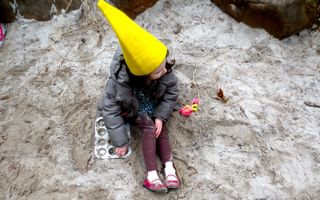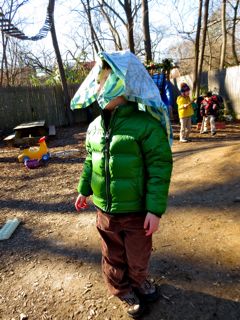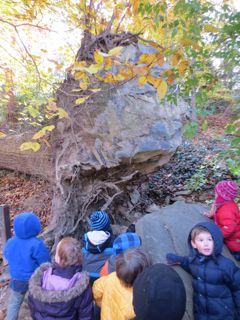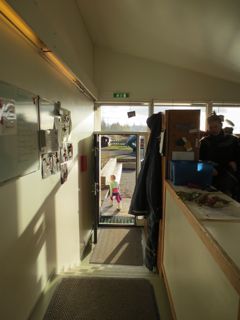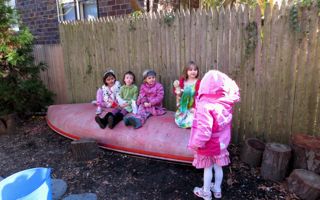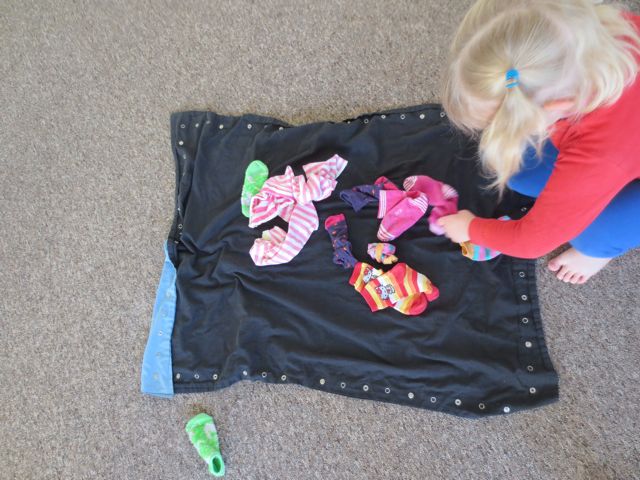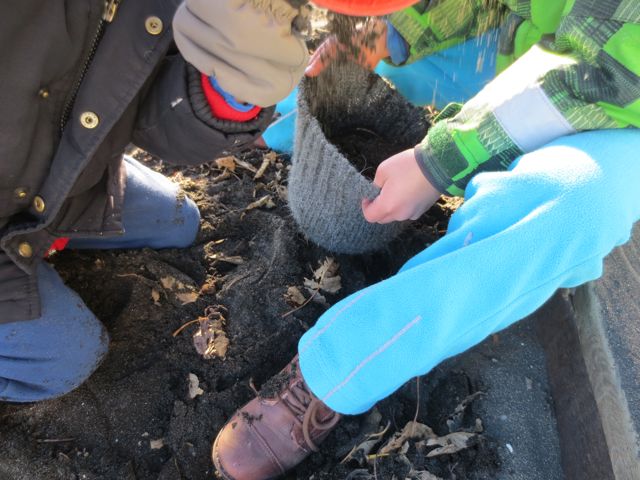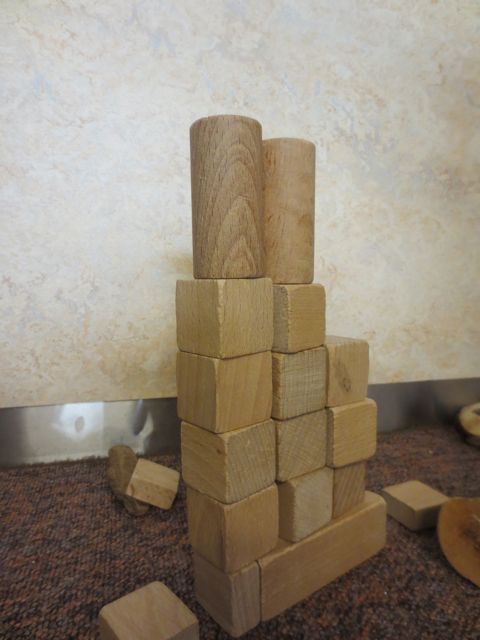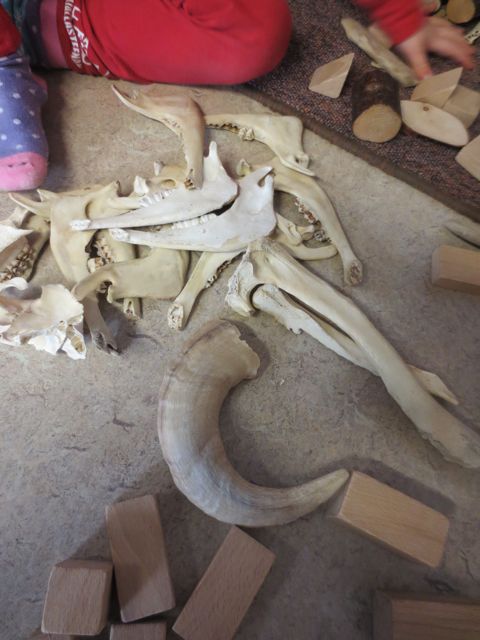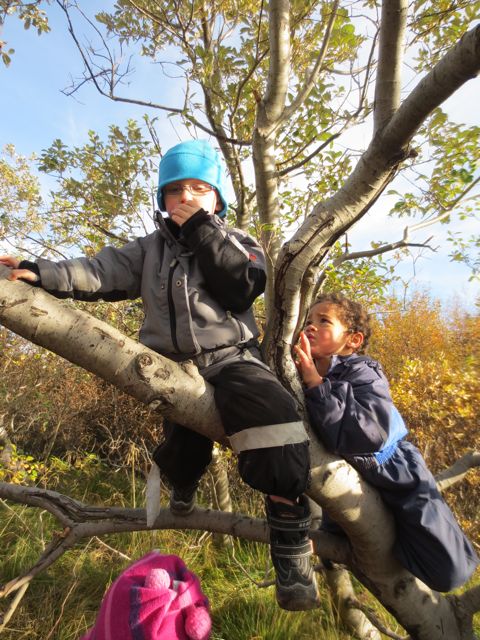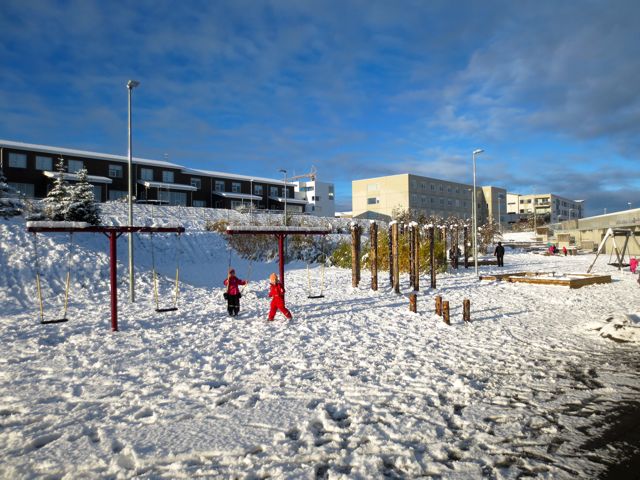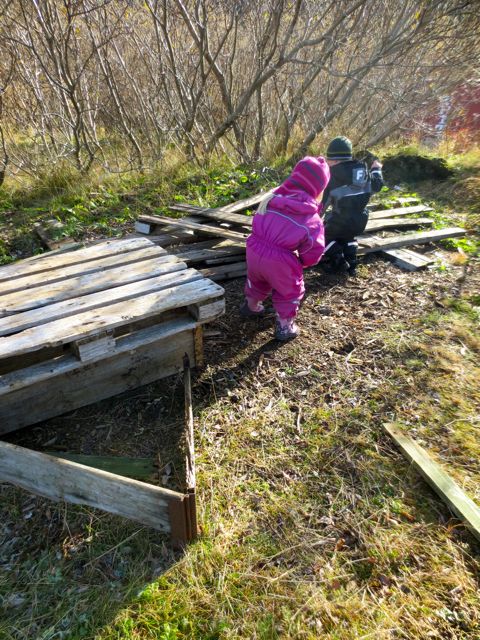“What happened?” The children suddenly stopped short when they ran outside to play and found the loose parts platform they have been using as a pirate ship-dragon lair-princess castle dismantled. The planks were lined up 1-2-3 along the ground.
The Christmas Tree #playiceland Guest Post!
Project #Play365, A photo for each day of 2013
Another year is done and dusted. Another year of documenting play through photos, one for each day of the year. 2013 marked the second year for this documentation exercise. I struggled with the idea of doing it for a third year, but here we are on the 3rd day of the 2014 and there I am cruising through my photos, looking for those special images for today, a snow day with schools closed, and the weekend. I see that the inspiration chain extends well beyond my sources as inspiration chains will. My sources were Donna Ridley of Irresistible Ideas for Play-based Learning and Marc Armitage, independent consultant and researcher. Of course, their daily documentation is jam-packed with lovely images collected with superior eye and attention to detail. Donna's are featured on her personal page while Marc's can be seen publicly on his facebook page, Marc Armitage 365. Their photos are moments in time and place. I really encourage you to take a look.
The inspiration chain is long. A lot of people have been inspired to do the same and there is lots to see, which is good. People approached it in unique ways, Ayn Rorick Colsh of Little Illuminations collected a book a day, and what a great list, while Suzanna Law of Pop-up Adventure Play posted play jewels on all kinds of platforms on her blog, A Little Life of Play.
In the end, what attracted me to the project and held my attention (which is very, very, VERY hard to do) was that it shaped a formal, but relatively easy, reflection process. That I focused it on play, something that I see most days that I am working, made sense, but then it also challenged me, especially that first year. I discovered that the "something I see most days that I am working" presented a challenge for the days that I wasn't. I am so used to seeing play as an adult viewing the play experts, children, I was adrift on the days I was not around children. Now, I have struck a balance philosophically, while trying to hold true to posting something daily, first just on the Cooperative School's facebook page and now also on our flickr page.
At the end of the school year last year, one of our parents carefully and painstakingly collected the #Play365plus1 photos from 2012 and curated them, publishing a blurb book as a gift from all the parents for me. 2012 was a leap year, so there were actually 366 days to document! Seeing the photos, printed on the page, was a gift beyond compare. It gave me an opportunity to look, again/again, at the photos from that first year of documentation and reflect on how imaginary play -- the total buy-in -- of imagination and dramatic play envelopes and embraces children. It is magic. You can read more about this reflection in the post, Buying in and Dramatic Play.
This year, because the collection is also on flickr, it is easier to access visually. I, of course, still hope to see the collection in a book along with an introduction, but during the break I found myself reviewing my year, the year with the children, and play, looking for themes, and this is what I found...
2013 was a great year for headdresses.
2013 was also a good year for moments in time, those kind of moments that are unique to childhood. The challenge of mixing a potion that will terrify you with it's stinkiness and the idea to bury that stink to be discovered by some future generation of children can only be thought up by children. 2013, the year of the stink!
The #Play365 2013 collection also featured images that marked perfect examples of our Through the Garden Gate curriculum and philosophy, specifically the world out there and our place in it. The first photo features children running, how I love to see children run each in his or her own way, towards each other from the points of a star at the National Arboretum in Washington, DC. Then when we visited the National Portrait Gallery in DC, we may have been surrounded by paintings and sculptures of the masters, but the children felt compelled to find out where the water went in the crack along the floor. What did they see, with bodies pressed along that stone floor, nose touching the metal plate hiding the inner workings of the fountain?
This photo below of another "out and about," I will treasure because the children looked at this great split stone wrapped in the roots of a fallen (or as they named it, "The Falling Tree") with a mixture of awe, fear, and total fascination. "Can we touch it?" they asked, while not really wanting to hear "Yes." They held their distance, wondering, wondering, "What could do this? What could knock down this great tree and split a giant boulder bigger than any one of their parents?" Of course it was probably a dinosaur or a giant. What else could do something like that?
While I took a lot of photos during my learning adventure in Iceland, this one is my favorite. The door was open, and the rooms of the school were so cozy, but during our stay there, the outside was always beckoning. I left DC and it was still short sleeves weather even in October. The air was so clean and clear in Iceland and so crisp. Half in, but looking out, that is what this photo says to me.
And as always, imaginary play wove itself in and around the children and was caught to savor for later. Listening for signs of life inside stones, setting a table of carpet squares for a monster feast, watching children turn into selkies waiting to be fed, and taking advantage of a house the wind has made and turning it into the blue of a shark pool -- don't get too close to the sharks! -- were all in a day's play for the children.
Here I am on day 3 of the challenge in 2014. Play away, play away, and looking forward to sharing. Happy and healthy 2014, friends.
Materials #playiceland
Materials are a focal point in our schools and childcare centers 'round here. Discussion groups, blogs, and pinterest pages are devoted to 'stuff'. "All natural!" some pages shout and "No plastics!" give evidence for whole philosophical approaches. Lately, prospective parents visiting our school during open house tours want to know what kind of materials we offer the children. I know I spend A LOT of time looking for stuff. I am particular about what I collect or buy. Andrea is too and we are fortunate to have an entire basement to store our collections. And the basement is filled. This is not an exaggeration. It is filled.
That said, I know that some of it is not essential. I actually have a list of essentials and most of these can be found just around and are free. That means the rest is simply icing on the cake. Could I make do without all of it? What are your essentials?
I saw three patterns that kept repeating during the Iceland school tours. The first centered on environment. In The House, I talked about the way the schools and their spaces were designed. In the post, Independence, I found that a culture that values independent thinking and resiliency gives voice to the shaping of early childhood programs. We saw some very different programs and philosophies, but all seemed to take on, at their core, independent thinking and resiliency as guiding principals. In thinking about the materials that were offered in the classrooms, I found that these perfectly reflected the design, or rather, designation of space as well as the intention to nurture independent thinking and resiliency. It was not through MORE stuff, it was with what could be seen as essentials.
This hit me like a ton of bricks -- or better, a ton of hollow blocks -- at our first school tour at a Hjalli model school, I felt compelled to open doors and to look in cabinets. I actually felt a certain degree of panic. Where was the stuff? Our tour guide, the principal of the school, patiently allowed me to open one of the doors to find their collection of upholstered blocks stacked up in a window.
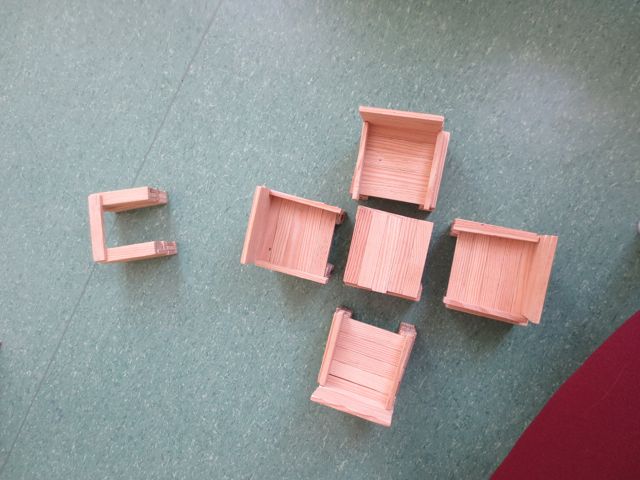
Each room featured a different kind of material, but single-focus material. A room for hollow blocks. A room for unit blocks. A room for the upholstered blocks. Then a room which featured drawing, play dough (clay), and water table. This was jarring, but challenged me to think differently. Could I get out of my head, out of my way of thinking, and see what was in front of me?
The first thing that helped me was watching a planned, and teacher-led, lesson that featured children climbing out a window, barefoot, from one room and then along strategically placed chairs along the outside of the school to climb back in a window in another room. This is a very interesting, feet and hands-on way to experience architecture, counting, and then once they climbed into the room, they had to find their own pair of socks from a collection piled up on a fafu poppy.
We all know that imaginary play only needs an idea. Dress-ups, plates, pots and pans, etc. are non-essential, children will make do with dirt and sticks. Inside, I saw two drawings take shape. One was a map and the other was more of a story illustration of a pirate on a ship. I realized that these two boys had a plan. Once outside, they put the plan into action and a whole group of boys were involved (note: the Hjalli-model schools are gender-divided). Treasure hunting manifests the same the world over, I suppose. What was interesting is that although there were buckets available, some agreement between them led them to use their hats to collect the treasure. The treasure was the black lava sand that filled the sand pit and play area. So now take buckets off the essential list.
While the basics were always evident in the two Hjalli-model schools we visited, they also have a system of introducing "special materials" over time. At one we saw sheep jaw bones and horns collected following an annual tradition. At the other, we saw hoops and cones, all materials very familiar to us here in the States, as well as fine motor manipulatives.
While the other three schools were different from the Hjalli-model schools, there was a shared simplicity, a commitment to the essentials -- how far could a child's imagination take him or her?
The answer is, "Very far."
At Stekkjarás, we met the children in the forest. They spend one day a week out in the great, wide world and what do they need? It is not bought, it is not brought in, it is simply there. Not all of it is natural, some of it is left by humans. These things become part of the draw and also a source of discussion, "Who left this?" and "What shall it mean to us?" Mostly, though, this becomes a place all their own, with things they are the first -- in the great, wide world -- to discover. Over and over again. And all they need to do is walk outside.
There is also an inside at Stekkjarás. It is a Reggio-inspired school that embraces full body movement and, again, independence in thought and pursuit. Here we saw the rooms of hollow blocks, unit blocks, upholstered blocks, and while there was seemingly more stuff, it still looked and felt like a lot of time and thought went into selecting the essentials that would leave room for open-ended play.
At the last school we toured, the Alfaborg playschool which is also a Reggio-inspired school, we saw how children could pull together to make an imagined world soar -- in their own way using materials that were child-sourced. The children were exploring (and had been for several months) birds and from this, they discovered Peter and the Wolf. They worked together to make the world Peter inhabits their own and then staged the show for all to enjoy.
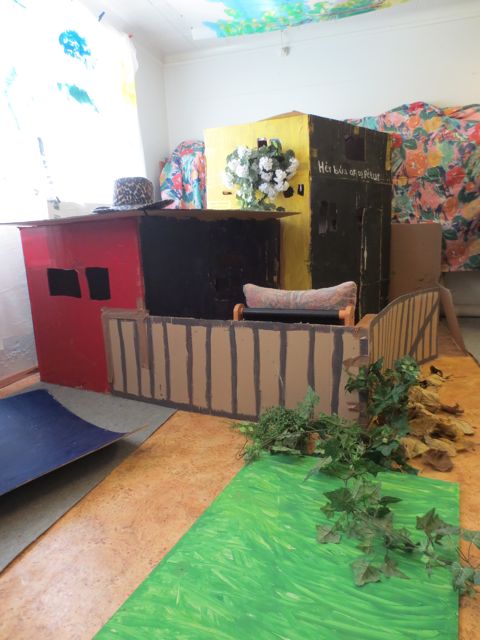
Long story, short, I was able to step outside my mindset and find common ground. Now, I won't be giving up my filled shelves anytime soon and our walls will not be painted white and the artwork will continue to be displayed just so. We will also continue to hold dear the ability to offer the children who attend our little school the opportunity to take risks and find adventure both indoors and out. We will pursue art, dramatic play, and outdoor adventure as we do. All these things and activities also nurture independence and resiliency. And that is perfect. For us. The important part of this story is that there is more than one way to build the experience of early childhood and more than one way to nurture independence and resiliency.
And that is the beautiful part of this story.
Independence #playiceland
At our first school visit, we came around a corner just as a group of little, littles were getting ready to go outside. At this time of year in Iceland, getting ready to go outside involves layers and lots of them. The children already had their snow suits on and most were heading out. An adult was busying himself gathering items they would need outside and getting himself ready. A lone boy was trying to put his knit hat on and he kept turning and looking at the hat, really wanting the front to be at the front and the back to be at the back. He would turn it and look, try it on, somehow feeling that it was not just right, take it off, turn it and look. He did this several times and all the while, my fingers itched to simply take the hat and put it on him so he could scoot outside. In the end, he got it on in a way that satisfied him, a bit folded along the edge, no matter, and out he trotted. This was my reality check and throughout the rest of the trip, I kept coming back to this moment and how I had to resist the urge to just put his hat on him. For him.
Now don't get me wrong, I would not characterize myself as a hovering kind of teacher, but this is the value of seeing outside myself and conducting regular systems checks for what I hope to achieve. Something as simple as putting on a hat for a child takes us down a certain road, doesn't it? I watched even the littlest of littles get themselves ready to go outside AND come back in, full snow gear, boots, suits and mittens, and get themselves ready to play inside. Where we live, putting on a jacket is not often necessary in the scheme of things, but there was more to this independence story than just putting on snow pants and a hat!
In my last post, I shared a bit about the design of the Icelandic schools in my post "The House." The very design of the schools, complemented by the educational philosophy, engender independence in both thought and action. This is something that resonated with me. I believe that through design of the environment and through planning and intention, children can find the comfort to fully explore their surroundings and express themselves.
As I described in that last post, the classrooms we visited were essentially a cluster of rooms, each purposefully devoted to different pursuits. The rooms had doors and those doors were more often shut, children on the inside and the teachers floating in and around the other rooms. We spend so much time at our school creating hidden spots and cubbies, always with this knowledge that we have to check sight lines. How thrilling is it to see a door that can simply be closed so the play inside can roll out in a purely child-defined form?

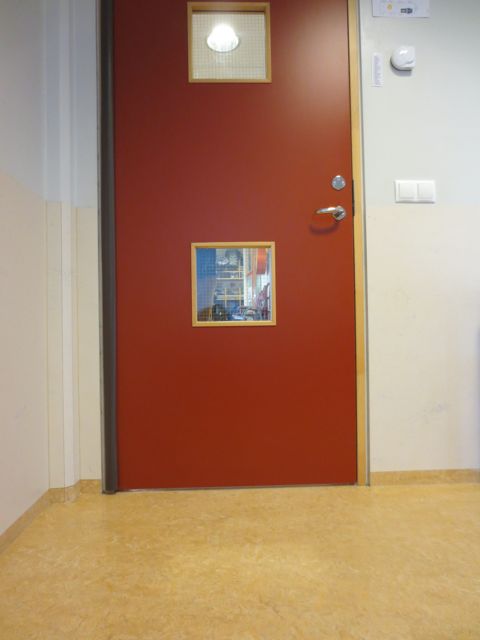
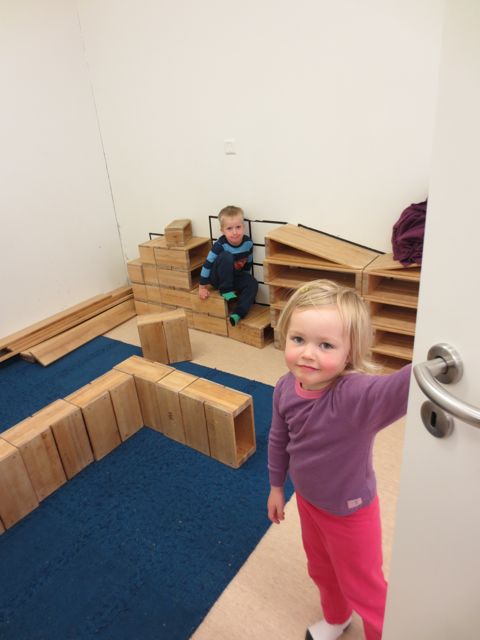

This freedom to shape their own independence spilled out to the great out of doors. The landscape of Iceland is especially stunning. The 5 days we were there, we enjoyed crisp, cool bright blue skies, then it snowed and we had both cloudy and blue skies again, followed with a bit of windy rain. No matter what, the children were out and about in it. It was then I liked to play the game, "spot the adult." The adults were very much THERE, but also very much NOT THERE.
When we visited Stekkjarás, a reggio-inspired school, the children were already out in the forest. Their teacher met us at the school and walked us out, stopping at a grove of small trees. I wiggled into the middle of the grove and just listened. Their teacher said the rule is that the children should always be able to see a teacher which places the responsibility for self in the hands of the child. Out in the forest, you could first hear the children. I listened. Sitting in the grove, I did not feel alone. I could hear the children. I trusted that sound.
We continued along the path and then suddenly, there the children were, but only three of them, busy trying to pry apart some boards to drag and drop down into a mysterious hole in the ground and it all became very, very clear. The children trusted themselves and the adults trusted them as well. Once the plank-dropping was tested, the children led us to another group playing in and around a shipping crate and assorted farm equipment (the forest is part of an abandoned orchard). Here the children fanned out and could be seen here and there on a grassy hill and scrambling around on trees, a large pipe, and pallets.
It was perfect.
The story, from beginning to end, is about gaining independence. From this we move directly into trusting the children to stand, climb, roll, and tumble on their own. We expect them to be independent.
And suddenly...they are.


